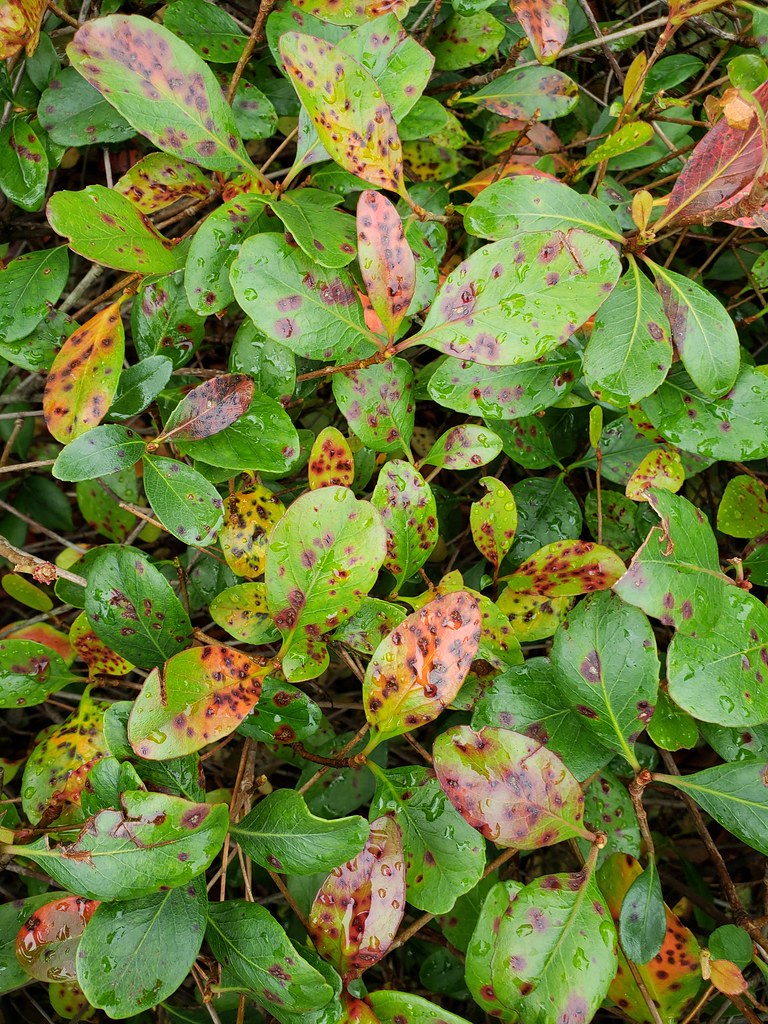
Entomosporium leaf spot
Entomosporium spp.
Also Known As - Leaf spot EntomosporiumWhat is Entomosporium leaf spot (Entomosporium spp.)?
Entomosporium leaf spot is a harmful disease caused by a fungus called Entomosporium spp. It affects many plants belonging to the Pomoideae group of the rose family. Commonly affected plants include apple, crabapple, pear, hawthorn, loquat, photinia, pyracantha, quince, and others. The disease's symptoms are characterized by small reddish spots on the leaves, which become darker and larger as the leaves mature. These spots may also have a halo around them. Within the spots, cream-colored spore-forming bodies develop, often covered by a shiny membrane. In severe cases, the infected plants may experience leaf drop.
How does Entomosporium leaf spot (Entomosporium spp.) occur?
Entomosporium leaf spot reproduces through spore production and dispersal. The fungus overwinters mainly as spores or mycelia on fallen leaves. Raindrops or overhead irrigation splash spores from infected plant tissue or contaminated leaf litter to healthy leaves, facilitating fungal infection and disease development. The spores are released from the fungal fruiting bodies during the late winter and throughout the growing season. Warm and humid weather conditions promote the appearance of symptoms around 10 to 14 days after infection, contributing to the spread of the disease.
Symptoms
1 - Plant Impact
• Entomosporium leaf spot causes defoliation and weakens plant health and growth. Severe infections lead to significant leaf drop, reducing photosynthesis and nutrient uptake. • The disease affects the aesthetic appeal of ornamental plants.
2 - Soil Consequences
• Accumulated infected plant debris and fallen leaves serve as a source of spores, promoting disease persistence. • Diseased material in the soil creates a favorable environment for fungal growth and survival.
Solutions
1 - Cultural Control
• Choose disease-resistant plant varieties when possible. • Remove and dispose of infected leaves and plant debris promptly to reduce the source of spores. • Properly space plants to improve air circulation and promote faster drying of foliage. • Use drip or low-volume sprinklers instead of overhead irrigation to minimize leaf wetness. • Monitoring: Regularly inspect plants for early symptoms and take immediate action if detected.
2 - Fungicide Application
Fungicides commonly used to control Entomosporium leaf spot include Azoxystrobin (e.g., Heritage 50W), Chlorothalonil (e.g., Daconil Weather Stik 6F, Daconil Ultrex), Myclobutanil (e.g., Eagle 40W, Immunox), Propiconazole (e.g., Banner MAXX), Thiophanate-methyl (e.g., 3336 50W, Halt 50W), Triadimefon (e.g., Bayleton T/O), and Triforine (e.g., Rose and Shrub Disease Control). Please consult product availability and follow label instructions for safe and proper use.
